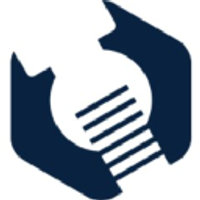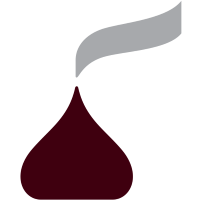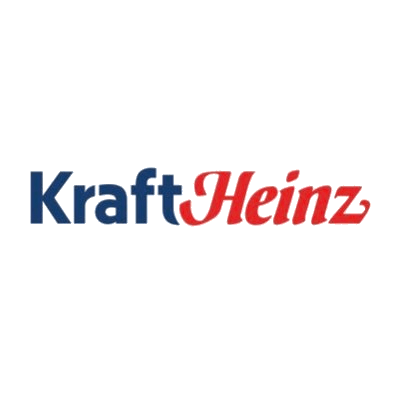
Bulten AB
STO:BULTEN


| US |

|
Fubotv Inc
NYSE:FUBO
|
Media
|
| US |

|
Bank of America Corp
NYSE:BAC
|
Banking
|
| US |

|
Hershey Co
NYSE:HSY
|
Food Products
|
| US |

|
Pfizer Inc
NYSE:PFE
|
Pharmaceuticals
|
| CN |

|
Tencent Music Entertainment Group
NYSE:TME
|
Media
|
| US |

|
Visa Inc
NYSE:V
|
Technology
|
| CN |

|
Alibaba Group Holding Ltd
NYSE:BABA
|
Retail
|
| US |

|
JPMorgan Chase & Co
NYSE:JPM
|
Banking
|
| US |

|
Coca-Cola Co
NYSE:KO
|
Beverages
|
| US |

|
Automatic Data Processing Inc
NASDAQ:ADP
|
Technology
|
| CN |

|
Bilibili Inc
NASDAQ:BILI
|
Media
|
| US |

|
Apple Inc
NASDAQ:AAPL
|
Technology
|
| US |

|
NVIDIA Corp
NASDAQ:NVDA
|
Semiconductors
|
| US |

|
Alphabet Inc
NASDAQ:GOOGL
|
Media
|
| US |

|
Kraft Heinz Co
NASDAQ:KHC
|
Food Products
|
| CN |

|
Baidu Inc
NASDAQ:BIDU
|
Media
|
Utilize notes to systematically review your investment decisions. By reflecting on past outcomes, you can discern effective strategies and identify those that underperformed. This continuous feedback loop enables you to adapt and refine your approach, optimizing for future success.
Each note serves as a learning point, offering insights into your decision-making processes. Over time, you'll accumulate a personalized database of knowledge, enhancing your ability to make informed decisions quickly and effectively.
With a comprehensive record of your investment history at your fingertips, you can compare current opportunities against past experiences. This not only bolsters your confidence but also ensures that each decision is grounded in a well-documented rationale.
Do you really want to delete this note?
This action cannot be undone.

| 52 Week Range |
61.3809
91.5
|
| Price Target |
|
We'll email you a reminder when the closing price reaches SEK.
Choose the stock you wish to monitor with a price alert.

|
Fubotv Inc
NYSE:FUBO
|
US |

|
Bank of America Corp
NYSE:BAC
|
US |

|
Hershey Co
NYSE:HSY
|
US |

|
Pfizer Inc
NYSE:PFE
|
US |

|
Tencent Music Entertainment Group
NYSE:TME
|
CN |

|
Visa Inc
NYSE:V
|
US |

|
Alibaba Group Holding Ltd
NYSE:BABA
|
CN |

|
JPMorgan Chase & Co
NYSE:JPM
|
US |

|
Coca-Cola Co
NYSE:KO
|
US |

|
Automatic Data Processing Inc
NASDAQ:ADP
|
US |

|
Bilibili Inc
NASDAQ:BILI
|
CN |

|
Apple Inc
NASDAQ:AAPL
|
US |

|
NVIDIA Corp
NASDAQ:NVDA
|
US |

|
Alphabet Inc
NASDAQ:GOOGL
|
US |

|
Kraft Heinz Co
NASDAQ:KHC
|
US |

|
Baidu Inc
NASDAQ:BIDU
|
CN |
This alert will be permanently deleted.
 Bulten AB
Bulten AB






 You don't have any saved screeners yet
You don't have any saved screeners yet

Hello, and welcome to the Bulten Q1 Report 2020. [Operator Instructions] Today, I'm pleased to present the CEO, Anders Nyström; and the CFO, Helena Wennerström. Please go ahead with your meeting.
Okay. Welcome, everybody. This is Anders Nyström speaking. The agenda for today will be a brief overview of Bulten, the development in our markets, results for the first quarter and, of course, some words about how those [ within ] our industry is affected by the COVID-19 situation. And finally, some words about the future.So if we flip to Page 4. Bulten is a supplier of fasteners, as you know, primarily to the automotive industry. But we don't just supply hardware. To many of our customers, we are a partner for product development support, innovation, procurement and logistics. As you can see in this slide, Bulten has a broad customer base with light vehicle producers as the largest customer group. Bulten's 3 largest customers are Ford, JLR and Volvo Cars. When acquiring PSM during the first quarter, we added automotive customers, primarily Tier 1 suppliers, but also customers outside the industry. To be an approved supplier to these many customers is a strength. Customers value the way we cooperate with them and recognize us for our service. Bulten has many customers with potential for further growth.Next page, please, Page 5. Our geographical footprint is another uniqueness that makes us stand out. None of our competition has this coverage. We balance our production between approximately 40% outsourced production and 60% in-house production, and we can thereby be flexible and cost efficient.Bulten already today has a lean and well positioned operation with a global presence. Including PSM, we have about 1,750 employees. We offer local production in Europe, U.S., China, Taiwan and Russia, which is unique in our competitive set. Through the acquisition of PSM, we have an even more comprehensive geographical coverage than before.So flipping to the next page, market developments. We go to Page 7. As you all know, the situation in the automotive industry has been quite dramatic in the past year and not at least in the last few months. During 2019, Bulten kept its market share in a slightly decreasing overall market. It was a turbulent year for the industry as a consequence of new regulations, the political climate influencing terms of trade in many countries and the uncertainty surrounding Brexit.In early 2020, the COVID-19 situation has had a large and gradually increasing impact. In February, car production stopped in China. At the end of the quarter, production in China began to recover but is not yet back to previous levels. In March, many customers closed their production units in Europe and North America. Some customers in Europe have restarted in April. And we, of course, follow the situation closely, and we are ready to ramp up production in line with customer demand.Next slide, please, at 8. Looking in a shorter perspective, the industry forecasting company, LMC Automotive, estimates a downturn in production of vehicles this year, a consequence of the COVID-19 situation and very much changed forecasting to a couple of months ago. LMC now predicts a 13.4% lower global production during 2020 for light vehicles. For Q1, LMC statistics show a 38% drop in global volumes for light vehicles. For heavy commercial vehicles, the full year prediction is 27% lower volumes. Translated into Bulten's customer mix, this would mean 15% lower volumes in 2020.Page 9. Looking in the longer perspective, LMC estimates a bounce back of production of cars in the years to come, with an increase of 13% in 2021 and 6% in 2022. Based on these estimates, it seems like volumes missed in 2020 will create a pent-up demand. Looking at the same thing for heavy commercial vehicles, they estimate an increase in production of around 20% in 2021 and 10% in 2022.Now let's look at the first quarter on Page 11. Let's do a short summary of this eventful quarter then. We presented a renewed strategy and new financial targets at our Capital Markets Day in February, where we also showed our newly launched product concept with BUFOe, a new energy-efficient product family with 50% less energy consumption in the production phase. We completed the acquisition of PSM at the end of February, which means we consolidated PSM for 1 month in the quarter. In January, we saw the first signs of COVID-19 effects in China and the gradual spread to Europe and worldwide, which you're all familiar with. Subsequently, Bulten has taken action to mitigate effects due to COVID-19. The Board has withdrawn its proposal of dividend to shareholders. And we've implemented short-term layoffs of employees, and investments have been deferred.Page 12. We formally completed the PSM acquisition on February 28. We see a lot of advantages and synergies between PSM and the old Bulten Group. Bulten will get a broader customer base in important growth markets like China and North America. In addition, Bulten's strong position will open doors for PSM in Europe. And for Bulten, PSM adds to the group's production capacity and product offering. We see synergy potential, both in terms of revenue and costs. All in all, we expect this acquisition to contribute positively to Bulten's development and earnings.Page 13. I previously mentioned the Stronger 24 strategy, which was presented in our Capital Markets Day in February. And of course, the strategy is nothing without also delivering tangible financial results. We are revising our targets to aim for a growth to approximately SEK 5 billion in 2024, which means a CAGR of 10%. We believe that we can increase profitability and aim for an EBIT of 8% and an ROCE of 15%. Although 2020 will be extremely challenging, we do not deviate from our strategy and our ambitious goals.Page 14. As we've communicated during March, most automotive players have been hit by the effects of COVID-19, and Bulten is no exception. To mitigate the effects, we've implemented cost reductions throughout the organization and made short-term layoffs for approximately 1,200 of our employees, and that corresponds to over 70% of our workforce. Management has cut its salaries voluntarily by 10% over the next few months, and we're looking into further measures to keep costs down. We also focus very much on cash management and cash flow improvement measures. We've set strict investment restrictions, for -- and for example, we planned the property investments in Poland of about SEK 250 million to SEK 300 million to be postponed. As earlier mentioned, the dividend proposal has also been withdrawn.And then to further review the numbers for quarter 1, I leave the word to Helena.
Okay. Thank you, Anders. And then we flip to Page 15. On this slide, you can see our financial summary of the first quarter. And the quarter included a good start with continued ramp-up of new contracts during January. But then we were hit by COVID-19, first in China, already in February, and further on in March, we can see a close down among most customers in Europe and in North America. The situation going forward is the same for us, like for many of our peers. We are in situation where it's very difficult to predict the development of coming months. But let's look at our sales and order intake. Please, the next slide, Page 16. Some more comments then on net sales and order intake. The market decline is reflected in our order bookings and net sales during the quarter, although the effects have been partially balanced out by the acquisition of PSM. Despite a weak March, Bulten's net sales were almost unchanged during the quarter and amounted to SEK 821 million. Order bookings was down 6.1% in the quarter and amounted to SEK 688 million. However, the development is a bit uncertain to predict going forward as a consequence of the situation in the automotive industry. We see some early signs our customers are starting production again, but uncertainty is still at the high level. Next slide, please, Page 17, earnings development. Our earnings performance was, of course, affected by the low market activity in March. Our EBIT margin for the first quarter amounted to 5.2%, down by 1.9% compared to comparable quarter last year. EBIT amounted to SEK 43 million in the quarter. Adaption to production to the demand during the quarter has affected the company's earnings in the form of underabsorption of fixed costs and consequently put pressure on margins. And as Anders just mentioned, we have implemented actions to reduce costs, where a big portion of our employees, one way or another, has been affected by the short-term layoffs. And this will reduce this cost leverage in coming quarter. However, we will be prepared with the shortest notice possible to terminate layoff programs, to start production when the situation improves. Next slide, please, Page 18 and cash flow. In a situation like this, we focus very much on cash management, and we're actively working with our working capital. And this quarter, cash flow from operating activities before changes in working capital amounted to SEK 47 million, and that's mainly been affected by the operational results. And cash flow from -- after the change in working capital amounted to SEK 63 million. And at the end of the quarter, working capital increased by SEK 121 million through the acquisition of PSM, and cash flow from investing activities amounted to minus SEK 71 million, where the acquisition of shares for the dominant park with SEK 60 million. We have, as you know, halted operational property investment during the uncertain time. In total, the cash flow for the quarter was positive and amounted to SEK 76 million. And the company is mainly financed through a financing agreement with a total credit of SEK 750 million. And during the quarter, the company reduced the last option to extend the financing agreement, which now until end -- until June 2024, with more or less unchanged terms but adapted to the new conditions following the acquisition of PSM. Next slide, please, Page 19, key indicators. We have a return on capital employed of 3.9% or 5.9% adjusted for relocation, restructuring, acquisition. Adjusted for lease liabilities, our net debt-to-EBITDA is at 1.7 at the end of the quarter. And the equity ratio ended up at the level of 51.5% at the end of the quarter, affected by the acquisition of PSM, but still on a very solid level. Next slide, please, Page 20, on financial guidelines. And on this slide, we give you some short highlights regarding some key figures for us, and these guidelines are not to be considered as financial targets. Our guidelines for the average net working capital in relation to 12-month sales is about 20% to 25%, depending on the growth pace. At the end of March, the net working capital has increased by SEK 121 million with the acquisition of PSM, therefore, with this main reason for the high level of 29.9% in the end of the quarter. And the guideline for capital expenditures as a percentage of 12-month sales are between 2% and 3% for maintenance of equipment and additional 4% to 2% for the capacity depending on the market development. At the end of the March, the earning level of 6.3%. As mentioned before, the CapEx plan is on hold now, which will have effect on this key ratio going forward. And the guideline for depreciation a percentage of 12-month sales is between 2 -- 4% and 5%, considering IFRS 16. At the end of the March, we are in line with our guidelines. And the guideline for our tax rate is 24% to 28% over 12 months rolling [ we saw ] before tax. At the end of March, the average tax rate was 66.6%, and the high tax rate is due to loss carryforward not being balanced for some of Bulten's units where taxable surpluses have been -- not been yet recorded. Excluded for this, we are in a level of 26.9%. However, the tax rates will vary from quarter-to-quarter.And now back to Anders again.
Thank you, Helena. And we're going to look at our focus areas in 2020. So if you turn to Page 22, please. It is absolutely core to us that we handle the current situation that we're in, in a responsible way for all our stakeholders. We've implemented significant actions to mitigate the current situation with rigorous cost and cash flow control. As important, we're prepared for a swift ramp up when the signs of recovery is there. We see some early signs of customers ramping up, but it's much too early to predict when we'll return to normal levels. Moreover, we're focusing on delivering our synergy plans with PSM, which we've done from day 1 after the transaction. In uncertain times like these, opportunities also arise, and we will be ready to evaluate and act on those opportunities as appropriate. We're in a product-focused business, and we'll step up our innovation activities in order to provide both functionality and sustainability. You've seen proof of that in the first quarter with the launch of BUFOe. Finally, we'll deliver on our new strategy, Stronger 24, which we're extremely excited about. Next page, please. And most of you are familiar with the logic of this slide already. And this is showing the backlog of orders that are taken but not yet implemented into production. As of now, this order backlog amounts to around EUR 47 million on a yearly basis in full production. The timing of this backlog has become more uncertain due to the current situation in the industry. But it's a good buffer and a sign of strength when the industry returns to normal. We predict a stronger Bulten growth versus the market. We have a strong position in our market, and we will endure through this time. We'll focus on health, growth, profitability and cash flow.And this concludes the presentation, and we're ready for questions and answers.
[Operator Instructions] And our first question comes from the line of Mats Liss of Kepler Cheuvreux.
Yes. Couple of questions. You can hear me, yes?
Yes.
I can.
Yes. Looking at the sales performance there, I guess, the PSM acquisition contributed somewhat. Could you indicate how much?
Yes. We informed about that in the interim report, and it's amounted to SEK 33 million. And it's just related to March.
Yes. And -- yes. And the organic growth, well, do you -- should it be included? Or do you exclude that one this year? Maybe that should be excluded.
That's excluded, yes.
Good. And then just about this -- the order intake for the quarter is -- it seems that it's too early to say if that's a good guidance for the second quarter sales. It remains to be seen, I guess, how things develop during the next couple of weeks.
Well, that's correct, Mats. Of course, how much of that transfers into the lookup -- actually manifests itself, and invoicing is highly dependent on the industry's capability to recover. And there are many factors that come into play there, as you know. It's the access to personnel. It's the vulnerability of the supply chain of our customers as well as the demand situation in the market. So it remains to be seen.
Yes. Good. The PSM, they have a large exposure to the Asian market, I guess, and the Chinese production and so on. Have you seen -- the exposure to Asia is larger now. And it seems that the car producers in that area are also ramping up more than in Europe. What impact could we see there compared to previously, how you looked a year ago, I mean?
Well, you're right. I mean China is maybe 6 weeks ahead of Europe in terms of the COVID-19 situation, and they are ramping up production again. They started already in the end of quarter 1. And I'd say -- I would estimate that the car industry is back up to at least 90% production right now. And we see that coming through in both our facilities in China, both in Tianjin and in Wuxi.
Good. You implement a lot of measures to balance the decline in Europe and so -- but how -- what kind of leverage do you have there? Should we expect you to sort of present the loss in the second quarter? Or do -- will you be able, with the help maybe of Asia, to keep above 0?
I think you should expect that the underabsorption will continue with the -- given the market situation as it is. I don't think I can give you more guidelines than that.
No?
No.
Good. And finally, you've mentioned the opportunities that could arise in this kind of market situation. And well, should we see -- expect to see more of the same, I mean, more of -- are there more PSMs out there that could be added to your -- or do you see other opportunities as well? Or is it more like a statement you make in this situation that you like to be prepared for the things that you -- well, it's difficult to see right now, but it could arise, opportunities.
Opportunities could arise, and they can come in many shapes and forms. And -- I mean we never know what happens to the automotive supply chain once production starts ramping up. Many of our competition will probably have issues, and to what extent we can help our customers to get through that remains to be seen. But we're -- my philosophy is always in a crisis situation, there's always opportunity. And you have to look for it, and you have to be quick to grasp it. And then what shapes and forms it will come, let's see.
Our next question comes from the line of Kenneth Toll of Carnegie.
So a couple of questions to follow Mats' questions. Are you getting signs from the OEMs that they want to restart plants? Or is it more what we see in media?
It's a mixed picture, but surely, there are customers that are ramping up. And in fact, there are a couple that started their assembly plants this week. So cars are actually being produced as we speak. But it is slower, and they have to adapt to the availability of both components and personnel and the demand, of course. So it's not a digital thing. It's a slow ramp-up. And the restart dates of our customers, they spread widely across Europe depending on in which region they are and what situation they're in. So it is happening, yes. But of the 133 car assembly plants in Europe, there's a wide spread of dates.
Okay. Then of your sales, I mean, we'll always talk about car production and so on. But do you have any part of your sales that goes more to aftermarket? Or is that -- yes. So basically, if the car plants is in standstill, do you still have some sales?
Right. It's not like being in the bumper fascia business or the headlight or taillight or glass business where you have sort of a big portion of your sales going into the aftermarket. That's not where we are. So I'd say that's marginal at best.
Okay. Okay. Okay. And then Mats also discussed that the situation in Asia is more on the recovery note and so on. But are you seeing PSM also taking cost measures in the U.S. and maybe in Asia as well?
Absolutely. We're equally doing that across the board.
Okay. And then finally, do you feel that your customers are concerned about balance sheet among its suppliers?
I'm sure they are. They haven't explicitly asked us any questions about that. I think they have bigger fish to fry right now, and they will come as the supply base needs to start building working capital. There will be issues in supply rates, for sure, but -- of the industry. But right now, it's not center of our attention.
So it's more -- do you think that those kind of discussions, that could lead to market share shifts and so on? Or do you think that car producers will try to step in and help financing working capital buildup or...
In some cases, they will have to because they can't shift production between suppliers very quickly. But it will surprise me if there won't be sort of a shift to the market shares in the business once the dust settles on this.
[Operator Instructions] And our next question comes from the line of Mats Liss of Kepler Cheuvreux.
Well, just coming back to CapEx there. You mentioned you put your Polish investment on hold for a while. And I guess what kind of implication will that have on your CapEx this year and maybe also next? And what will the total amount of CapEx -- or what should we estimate it to be this year and next?
Yes. As we say, we monitor the cash management for time being, and we need to, of course, look into the development going forward. But for the time being, we have said that we will postpone that. So of course, it will be much reduced. We would just do the absolutely necessary investments during this year. Then the bigger one is postponed for when we can see another kind of development and situation.
And the CapEx level, is it in line with the first quarter? Or for the full year, should we...
Yes, it will be very reduced. Yes, there was a taken decision and then the -- and necessary impairments and investments.
And the delay, that it doesn't affect your business opportunities, did you have sufficient capacity to handle the normal market situation anyway? Is that right?
Yes, we do. And as I think we mentioned before, the first step of the investment in Poland that we planned is not explicitly a capacity investment. It's an in-sourcing opportunity that -- just for ourselves to control and integrate more of the secondary operations. And it's not necessary to fulfill the customer obligations at this point, no.
Okay. Good. And then we ask the final one, just about the 2024 target there also. I mean things have happened since you launched it, but I guess things will go back to normal in the meantime. And it seems that you are quite confident about seeing those opportunities. And it's -- I mean it's probably a mix of synergies, both sales and costs and integration there with the PSM. But do you need any more step change things to happen, new food service contracts or maybe an acquisition or something like that? If you could add some more flavor maybe.
Well, I think we mentioned on the Capital Markets Day that the growth to SEK 5 billion will surely be a mix of organic and inorganic growth. The exact proportions between those 2, we haven't specified and we won't. But of course, we're looking for additional business opportunities, which we always are. And even though the industry is in the state it is in right now due to COVID-19, the new vehicle programs are still being developed. And sourcing opportunities are still around the corner. We're working closely with our customers to win more business. It's not necessarily affected by the situation we're in. We're not seeing those organic opportunities slip away from us in any way, at least not yet.
And there are no further questions at this time. Please go ahead, speakers.
We thank you for this time.
Yes. Thank you very much for your time and for your attention, everyone.
This now concludes our call. Thank you for attending. Participants, you may disconnect your lines.